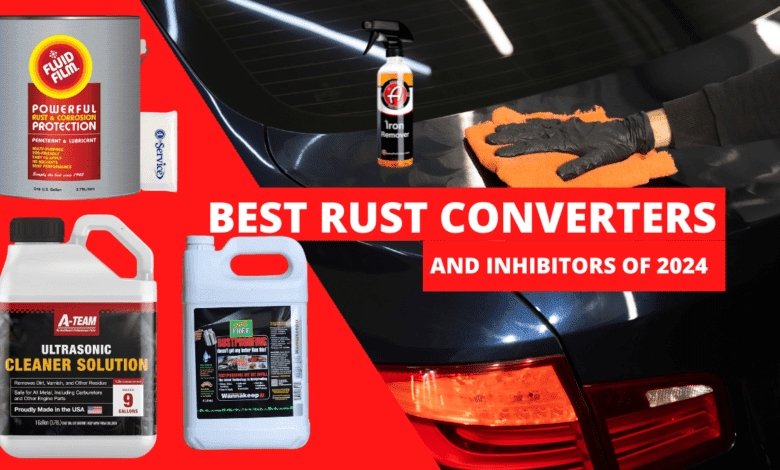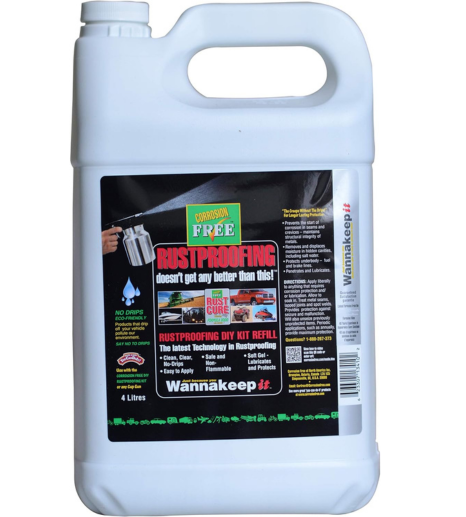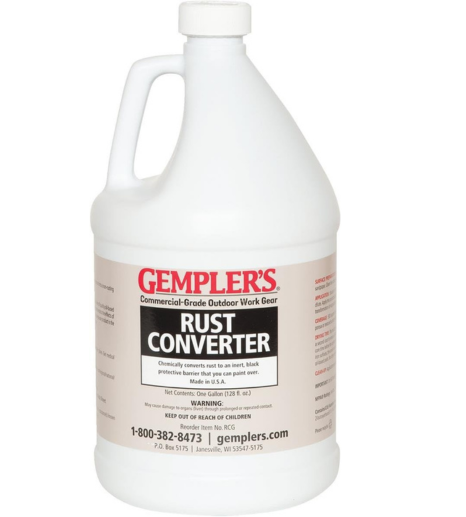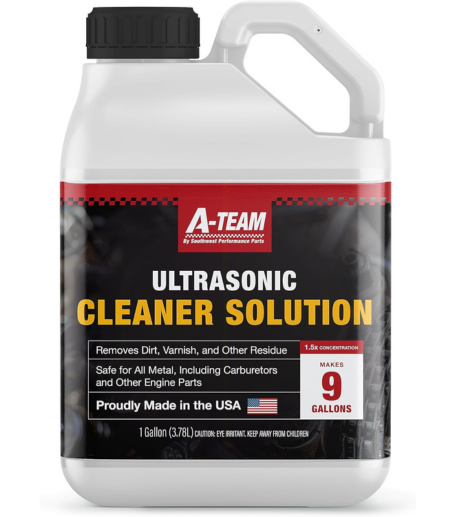Best Rust Converters and Inhibitors of 2024

Best Rust Converters and Inhibitors: Manufacturers put a lot of effort into ensuring that their new automobiles don’t rust, and most of them have extensive warranties that include corrosion prevention. That guarantee may also cover the paint against manufacturing flaws. However, older vehicles may not always have the same protection, and metal fatigue problems may ultimately arise in even modern models. If you reside in a snow-covered, salty winter paradise like Maine, you have undoubtedly seen eight-year-old cars with rusted fenders and tire arches.
It used to take hours to wire brush and clear a rust issue. For really problematic areas, they may have required welding. In 2023, there won’t be many collision and repair businesses eager to take on these projects since the customers usually don’t want to pay the hefty fee. However, you also have the do-it-yourself option of halting and fixing rust. Rust converters and inhibitors may be helpful, even if welding is not covered here, and taking up a torch carelessly is not advised.
Modern rust sealants and inhibitors can help resolve more minor spots without needing as much elbow grease. Still, they won’t fill a severely rusted-out section of a vehicle’s bodywork.
Modern rust converters produce chemical reactions by neutralizing rust and changing it into a harmless material that stops corroding the metal surface. They may assist you in halting the issue before it gets unaffordable to resolve or endangers safety in a significant way. These materials may also be used for other metal constructions in your house, such as little huts and patio furniture.
These items might help you save time and money when starting a rust job at home. But because not all of them are made similarly, locating functional and reasonably priced goods is critical. The five rust converters listed below satisfy that requirement and have amassed hundreds of satisfied customer testimonials.
Corrosion Free Rust Cure Formula 3000 1G/4L Jug
Corrosion FREE’s Rust Cure Formula 3000 aligns with your requirements for an effective rustproofing solution. This product is distinguished by its clean, precise, dripless, odorless, and non-toxic characteristics. It has been formulated to offer super lubricating metal conditioning benefits and creeping and penetrating properties in one formula. It includes active rust inhibitors and moisture displacers, protecting for up to 18 months.

Customers have reported positive experiences with Rust Cure Formula 3000, highlighting its effectiveness in applications like undercoating vehicles, protecting outside seams, and even using equipment like snowblowers. The product’s ability to adhere well to the undercarriage and resist washing off in heavy rain has been particularly appreciated. However, a minor issue was reported regarding packaging during shipping, which the company has addressed.
Corrosion FREE focuses on environmentally responsible solutions, stemming from a commitment that began with its founding in 1995. Their technology coats metal and bonds with it, creating a durable protective surface. This bonding action prevents water, oxygen, and salt penetration, stopping rust and corrosion. The company also emphasizes the importance of a light coating, as over-application offers no additional benefits.
Additionally, Corrosion FREE offers a comprehensive warranty covering items often not included by other rustproofing companies or manufacturer warranties, like fuel tanks, fuel lines, hydraulic brake lines, and emergency brake cables.
Gempler’s Rust Converter – Gallon
Gempler’s Rust Converter is a water-based formula that acts as a rust converter and primer, making it suitable for various iron and steel surfaces. It’s designed to treat rust effectively by converting it into a black protective barrier. This product is particularly user-friendly due to its ease of application and coverage area. One gallon can cover up to 500 square feet on a smooth surface.

The Rust Converter is eco-friendly, non-flammable, and easily cleaned up. It provides a smooth, black, protective surface finish and can be applied with a brush or sponge. For best results, it is recommended to use multiple coats. It’s slightly more expensive than some alternatives but is considered a practical option from a reputable brand.
In terms of usage, Gempler’s Rust Converter is straightforward to apply. Removing loose rust with a wire brush and involving the converter in the rusted metal surface is advisable. The product should be used at least twice a year for optimum protection. It dries in about an hour, although allowing 12-24 hours between coats is recommended, especially in moist conditions. A second coat is advised for the complete transformation of rusty surfaces.
Additionally, the Rust Converter has a shelf life and should be used within a specific time frame after purchase. It should be stored at room temperature, out of direct sunlight, and protected from extreme temperatures. The product is safe to use and similar to latex paint regarding vapor emission, but it is recommended in a well-ventilated area. If swallowed, medical attention should be sought as it contains tannic acid. After application, drying to a smooth, dark finish takes about 20-60 minutes. The cured rust converter coating should be sealed with two coats of high-quality oil-based paint for long-lasting protection.
Fluid Film 1 Gallon
Fluid Film’s 1 Gallon Can Rust Inhibitor is a lanolin-based product known for its effectiveness in preventing rust and corrosion. It is non-toxic, solvent-free, and has a non-drip formula. Many users have found it effective for various uses, including undercoating vehicles, protecting lawn mower decks, and preventing rust on tools and machinery. It’s praised for its ease of use and effectiveness, with users noting its ability to reduce rust, mainly when applied annually significantly. However, some users have mentioned that it can leave a yellow/brownish color when applied thickly and may have a strong smell depending on the amount used.

A-Team Ultrasonic Carburetor
The A-Team Ultrasonic Carburetor Cleaning Solution is designed for use with ultrasonic cleaning machines. It removes dirt, varnish, gums, and other contaminants from carburetors and engine parts. The solution is a high-concentrate cleaner that should be diluted at a 1:8 ratio with water for optimal use.
The cleaning solution selection is crucial for the best results in ultrasonic cleaning, especially for carburetors. While specific reviews for the A-Team Ultrasonic Carburetor Cleaning Solution were not accessible, the consensus for ultrasonic cleaning solutions is to choose one that is compatible with the material of the carburetor and effective in removing the types of contaminants typically found in such parts. For less severe cleaning requirements, some users have reported success with various cleaning solutions, including biodegradable concentrates and household items like Simple Green or Pine-Sol.

When using an ultrasonic cleaner for carburetors, it’s also essential to consider the size of the cleaner and the frequency of its operation. Different sizes are available depending on the number and size of the cleaned carburetors. Ultrasonic cleaners generate high-frequency sound waves that produce microscopic bubbles in the cleaning solution, imploring demand and carburetor rs. It’s the object being cleaned, effectively removing dirt and contaminants. This method is thorough and fast, and it can reach areas that are typically tricky carburetor summary, while the A-Tgenerateeaning Solution is specifically formulated for cleaning carburetors and engine parts in ultrasonic climploredldemanddem carburetor to; so it’s on factors such as the compatibility of the solution with the specific parts being washed, he contraction of the solution, and the specifications of the ultrasocarburetors machine. At the same time,
Adam’s Iron Remover (16oz)
Adam’s Iron Remover is a product that has garnered positive feedback from various users and professional detailers. It is designed to remove iron particles from car paint, which can embed themselves and cause damage over time. This product benefits car detailing as it helps maintain the vehicle’s finish by safely dissolving these particles.
The application process of Adam’s Iron Remover is straightforward and user-friendly. You spray it onto the car’s surface, let it sit for a few minutes to allow the chemical reaction to occur, and then rinse it off. One of the notable features of this product is its color-changing formula; it turns a deep purple as it reacts with the iron particles, providing a visual indication that it’s working.

Users have reported satisfactory results, mentioning that the paint feels smoother and cleaner after use. It’s also effective on wheels, quickly cutting through brake dust. The product is versatile and safe on various surfaces, including clear coats, glass, chrome, and even plastic and rubber trim.
However, there are a few considerations to be aware of. The product has a solid sulfur-like odor, which some may find unpleasant. Additionally, using the product safely, wearing hand and eye protection, and avoiding its use in direct sunlight or on ve, etc. Su,retc.ss, could potentially harm the vehicle’s finish.
In terms of value, while the initial cost of a gallon might seem high, the product is economically solid sulfur, like the small amount needed for each application. It is a singular vehicle’s appearance.
Adam’s Iron Remove is highly regarded for its effectiveness, ease of S.C., etc. It is essential and safe on various surf vehicles, making it a worthwhile addition to your car care routine. The minor trade-off of its odor seems to be outweighed by the economically solid sulfur in terms of ling and paint maintenance.
carhot3 has established a comprehensive approach to evaluating rust converters, removers, and preventive coatings, focusing on products that are highly rated and widely available across the U.S. Their evaluation criteria weigh various factors, each contributing differently to the overall score:
- Repair and Prevention Effectiveness (25%): This metric assesses how well the product stops existing rust or prevents new rust from forming. A product scoring high in this area effectively combats rust, enhancing the longevity of vehicle parts.
- Price (25%): The cost of the product is a crucial factor. Products offering the best value for money score higher in this category. This doesn’t necessarily mean the cheapest option, but the one providing the best performance for its price.
- Ease of Use (15%): This parameter evaluates how user-friendly the product is. Products that are easy to apply and require minimal preparation or specialized knowledge are rated higher.
- Additional Labor Requirements Like Sanding (15%): This aspect considers the extra work needed before or after applying the product. Products requiring less labor (like sanding or prepping the surface) are preferred.
- Environmental Impact and Potential Toxicity (15%): The ecological footprint and safety of the product are crucial—products with lower toxicity levels and lesser ecological impact score higher.
- Quantity for Price (10%): This evaluates how much product you get for the price paid. More quantity or better coverage per unit cost leads to a higher score.
- Manufacturer Reputation (5%): The brand’s market reputation, based on its history of reliability, customer satisfaction, and trustworthiness, also contributes to the overall rating.
Each factor significantly determines the overall effectiveness and value of rust prevention and treatment products. By considering a mix of end-user ratings, professional evaluations, and direct personal experiences, carhot3 aims to provide a well-rounded perspective on each product’s performance.
When to use a rust converter?
A rust converter is an ideal solution when encountering a rusty surface you intend to paint. According to The Rust Store in Middleton, Wisconsin, rust converters are special primers designed to chemically transform rust into a non-reactive, stable material. This transformation is not just a superficial cover-up; it’s a chemical process that stops the rusting process.
When you apply a rust converter, you are not merely “painting over” the rust. The product reacts with the rust (iron oxide) to form a new compound, often a type of ferric tetroxide, a black protective coating. This coating is a barrier to moisture and oxygen, the primary catalysts for further rusting.
Rust converters are handy in situations where:
- Surface Rust is Present: A rust converter can be applied to stop further deterioration if a metal surface has begun to rust but hasn’t corroded significantly.
- Preparation for Painting: Before painting a rusted metal surface, using a rust converter can ensure that the paint adheres properly and the rust doesn’t continue to spread underneath the paint.
- Avoiding Intensive Labor: If you want to bypass the labor-intensive process of mechanically removing rust (like sandblasting) or using acidic rust removers, rust converters offer a more straightforward solution.
- Restoration Projects: In restoration projects where preserving the integrity of the original metal is essential, rust converters can be a less invasive method of dealing with rust compared to other techniques that might require cutting out and replacing metal sections.
- Areas Difficult to Sand: A rust converter can effectively deal with rust without meticulous sanding for intricate metalwork or surfaces with hard-to-reach areas.
Remember, rust converters are most effective when used on surfaces where the rust is superficial and hasn’t penetrated deeply into the metal. Deeply corroded or structurally compromised metal may require more extensive repair or replacement. Also, it’s essential to follow the manufacturer’s instructions for the best results, including proper surface preparation and post-application care.
FAQs
Here’s a summary of the answers to your frequently asked questions regarding rust on cars:
- How Does Rust Spread?
- Rust, or oxidized metal, is a chemical reaction that degrades metal. It occurs when metal is exposed to water, oxygen, and environmental salts, including the humidity in the air. Rust can develop and spread quickly, especially if there’s damaged or bubbling paint or if bare metal is exposed.
- Difference Between Rust Remover and Rust Converter:
- Rust converters chemically transform iron oxide (rust) into ferric phosphate, creating a phosphate coating that integrates with the surface and can act as a primer.
- Rust removers, usually acidic, dissolve the rust. They require more time and need immediate re-sealing with primer to prevent further rusting.
- Removing Surface Rust from a Car:
- Start by scrubbing the affected area with a wire brush or sandpaper to remove loose rust particles. Be cautious to avoid damaging the metal. After removing the rust, clean and dry the area before applying a rust converter or primer.
- Preventing Car Rust:
- Regular cleaning, paint maintenance, and applications of wax or ceramic coatings can prevent rust. Avoiding salt-covered roads and regularly washing the undercarriage, along with applying rust-preventative treatments, can also help. Address surface rust immediately to stop its spread.
- Painting Over Rust:
- Simply painting over rust is ineffective as the rust will continue to spread underneath the paint, leading to cracking or bubbling. It’s crucial first to remove the rust with a rust remover or use a rust converter to convert the rust chemically into a paintable surface. After treating the area, applying primer is recommended.
For more detailed information, you may refer to specific automotive care guides or consult with a professional in vehicle maintenance.




